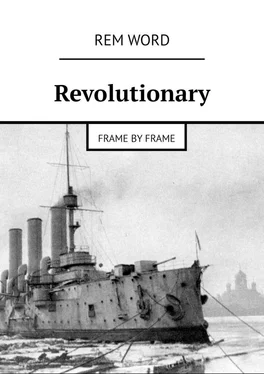Rem Word - Revolutionary. Frame by frame
Здесь есть возможность читать онлайн «Rem Word - Revolutionary. Frame by frame» — ознакомительный отрывок электронной книги совершенно бесплатно, а после прочтения отрывка купить полную версию. В некоторых случаях можно слушать аудио, скачать через торрент в формате fb2 и присутствует краткое содержание. ISBN: , Жанр: Публицистика, История, Политика, Биографии и Мемуары, на английском языке. Описание произведения, (предисловие) а так же отзывы посетителей доступны на портале библиотеки ЛибКат.
- Название:Revolutionary. Frame by frame
- Автор:
- Жанр:
- Год:неизвестен
- ISBN:9785449675361
- Рейтинг книги:4 / 5. Голосов: 1
-
Избранное:Добавить в избранное
- Отзывы:
-
Ваша оценка:
- 80
- 1
- 2
- 3
- 4
- 5
Revolutionary. Frame by frame: краткое содержание, описание и аннотация
Предлагаем к чтению аннотацию, описание, краткое содержание или предисловие (зависит от того, что написал сам автор книги «Revolutionary. Frame by frame»). Если вы не нашли необходимую информацию о книге — напишите в комментариях, мы постараемся отыскать её.
Revolutionary. Frame by frame — читать онлайн ознакомительный отрывок
Ниже представлен текст книги, разбитый по страницам. Система сохранения места последней прочитанной страницы, позволяет с удобством читать онлайн бесплатно книгу «Revolutionary. Frame by frame», без необходимости каждый раз заново искать на чём Вы остановились. Поставьте закладку, и сможете в любой момент перейти на страницу, на которой закончили чтение.
Интервал:
Закладка:
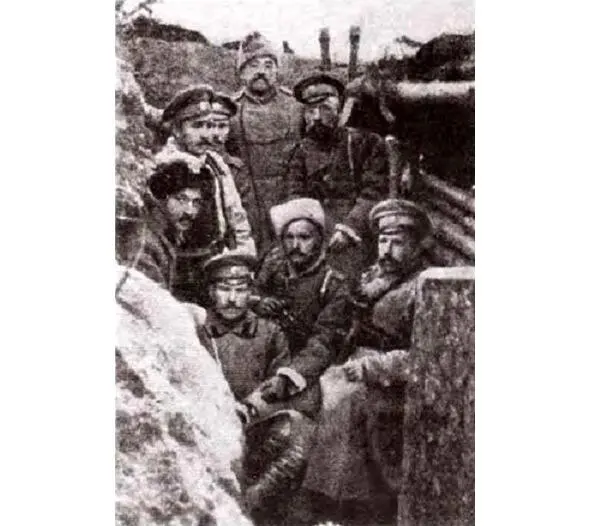
Storm of the Carpathians, winter of 1915. Russian soldiers. Randomly selected photo

Emperor Nicholas II and Commander-in-Chief of the Russian Army Nikolai Nikolayevich (grandson of Nicholas I). It seems that still can be very good. Already very soon, the royal personages will visit the islands of Imbros, Tenedos in the Aegean Sea, will reverently enter the church of St. Sophia. Petrograd streets fill out festive demonstrations. In the temples solemn prayers are held. But we know that this is the peak of the achievements of our great and at the same time terrible past of the Empire. Further decline and collapse of the state. Neighborhood of Przemysl, March 1915
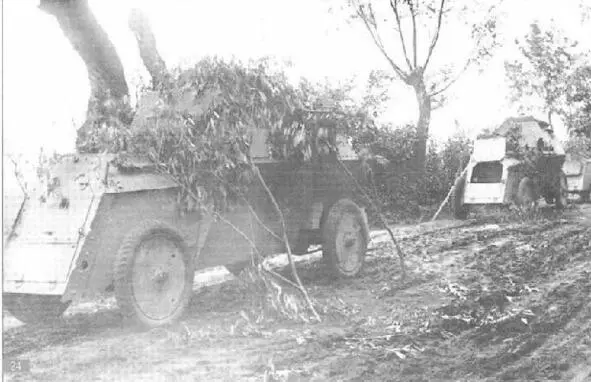
On February 7, 1915, the German armies began an offensive in the area of the Russian, and now Polish, city of Augustine. The maximum task is to surround and destroy the entire 10th Russian army, 155 thousand people. This plan is implemented only in part. One of the corps (38,000 fighters) gets into the environment, then a prisoner. Three other corps are moving to a new line of defense. Russia is losing 20,000 dead, 35,000 prisoners, Germany 5,000, and 4,000 prisoners. The territorial acquisitions of the German army are not large. The result of the subsequent Prasnysh operation is the counteroffensive of the Russian troops. By March 30, German troops return to their original line of defense. Russia’s irretrievable losses are 25,000, Germany’s 22,000. The photo shows Russo-Balt armored cars in the Prasnysh operation, March 1915. The armor is penetrated by rifle bullets from 30 meters, although their prohibitive action is already small. Russian, machine-gun and cannon armored cars that shoot Germans point-blank, have a decisive influence on the success of the counteroffensive

For the first time, the heavy bombers “Ilya Muromets” take off on February 14 (27), 1915. Most of the targets are located on the territory of modern Latvia. Initially, the aircraft factory as a branch of the famous Russo-Balt was located in Riga. In 1915 he was evacuated to Central Russia. The production of airplanes continued until 1918, with the domestic aircraft engines Russobalt, which replaced the German Argus. In the civilian version, the revolutionary C-22 was designed to transport a dozen passengers with all imaginable amenities. The bomber has a takeoff weight of 5 tons. Crew – 5—7 people, 4—6 machine guns, 350—500 kg. bombs. Engines are protected by armor 5 mm. The maximum speed of 135 km. hours, the flight duration of 4—5 hours, the ceiling of 3 000 meters. Built 83 copies
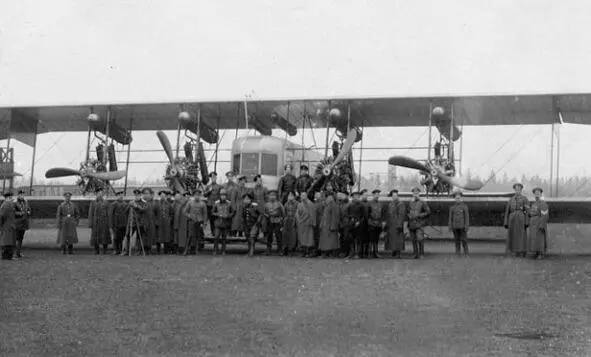
A squadron of 60 cars makes 400 combat sorties, drops 65 tons of bombs, shooting down 12 airplanes. The first “Ilya of Murom” was lost in aerial combat on September 12, 1916, in a battle with four German fighters. In this case, three enemy aircraft C-22 can be shot down. The effectiveness of the bombing of “Ilya Muromets”, according to the assurances of British experts, reaches 90%. For some time, the “backward” Tsarist Russia waged a high-tech war. Be that as it may, the airplanes wear out, and their entry into the troops is difficult due to the exacerbated political situation. By 1917, only four such aircraft remained on the front line. Designer Igor Sikorsky and the tsarist government are selling a license to design the heavy bomber Entente. The last flight, like a training airplane, “Ilya Muromets” makes October 10, 1922 over the city of Serpukhov
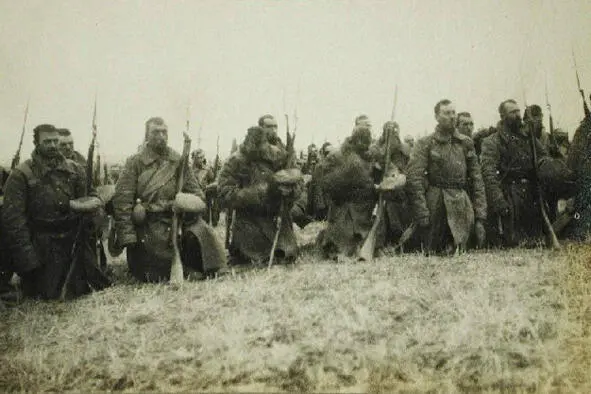
Russian soldiers in worship, spring 1915. The army obeys orders and is considered Christian. However, ceremonial as a thing in itself prevails over content. A called peasant, a worker does not speak heart to heart with a regimental priest. So just historically not accepted. Why do you need to shoot at the Germans, because they are the same people like us? Is it possible to consecrate the murder weapon? The priests are friends of the officers, they talk to them, they dine and drink with them
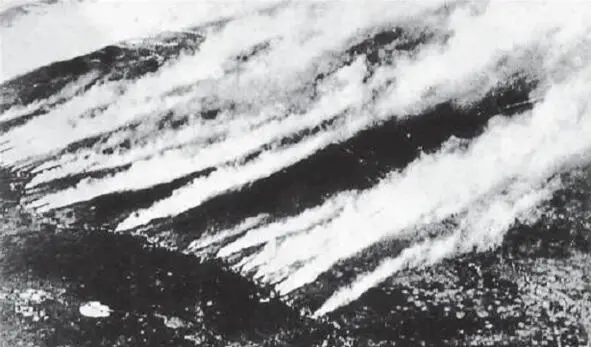
The first four months of the new, 1915, the parties to the conflict are gathering strength on the Western front. Then, for the first time in history, Germany applies the novelty of military thought – it releases one hundred and fifty gas cylinder batteries, 6 km from hundreds of cylinders. front line, 180 tons of toxic chlorine. The lungs of people caught in this fog are filled with a caustic mucous liquid. Following a cloud of yellow-green gas, in bandages soaked with protective compounds, German soldiers are marching. Such an apocalyptic picture discourages the British and the French not for long. Pull up reserves, already have some means of chemical protection. German troops stop, and the gap in the line of defense of the Entente is healed. As early as September 25, 1915, the Allied forces were conducting their “test” chemical attack. From 22 April to early May, a total of 10,000 Entente soldiers are injured by poisonous gases, 5,000 die. The photo is a snapshot from an airplane. German teams release chlorine from cylinders at the junction of British and French troops. The neighborhood of the city of Ypres, April 22, 1915

Fritz Gaber, outwardly cinematic Dr. Evil (Ivl), head of the Kaiser Wilhelm Institute of Physical Chemistry, developer of chemical weapons, inspirer of use. The wife of a scientist does not stand up to the thought that thousands of people perish through torture through the fault of her husband, and he commits suicide. Thirty years later, in the concentration camps of the Third Reich, the gas Cyclone B, developed by the same chemist, killed tens of thousands of tribesmen Haber
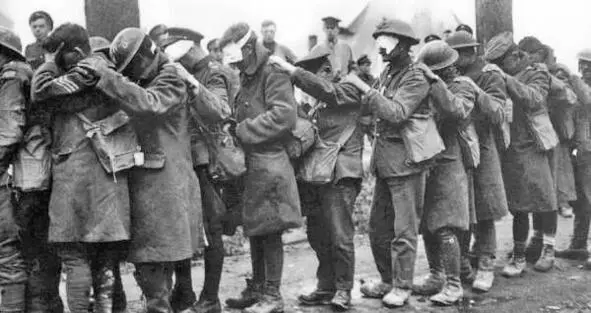
Two years later, all of the same long-suffering Belgian city of Ypres, the Germans use a chemical warfare agent, called yperite (mustard gas), respectively. Shipping method improved. Now they are mines made of mortars, filled with oily liquid. One of the actions of the reagent in non-lethal doses is the complete or partial loss of vision. In the future, such an ignoble weapon does not take root, the countries that use it become international outcasts. In the photo – British soldiers struck by agents hold each other as they proceed to the hospital, the second half of July 1917.
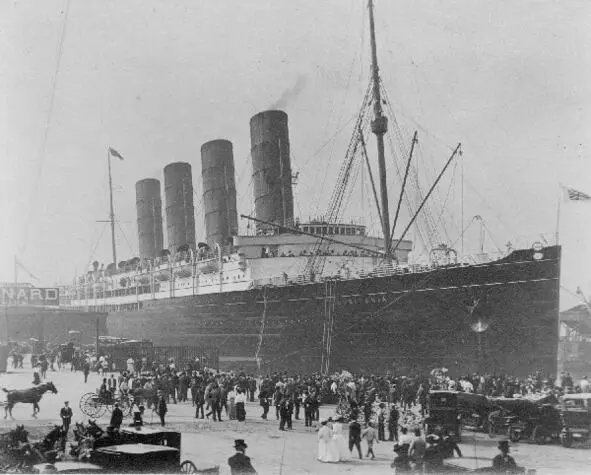
“Louisiana”, a British passenger vessel operates commercial flights during the war. According to some maritime laws of our time, it should not be torpedoed. The cabins are barely half full, and yet almost 2,000 people are aboard the liner. At 48 kilometers from the coast of Ireland, in a fog “Luizitania” reduces the course to 25 km. h. At this speed, the attack of submarines is already possible. Hungry for new victories, the captain of the German U-20 submarine gives the order to attack the “big four-pipe vessel”. Torpedo gets into the right side. In a few minutes, a much more powerful internal explosion follows. Due to the strong roll and the course of inertia, it is possible to lower only 6 of the 48 boats. The vessel goes to the bottom 18 minutes after the attack. Photography – “Luizitania” in the port of New York, before departing on its last 201st flight, May 1, 1915
Читать дальшеИнтервал:
Закладка:
Похожие книги на «Revolutionary. Frame by frame»
Представляем Вашему вниманию похожие книги на «Revolutionary. Frame by frame» списком для выбора. Мы отобрали схожую по названию и смыслу литературу в надежде предоставить читателям больше вариантов отыскать новые, интересные, ещё непрочитанные произведения.
Обсуждение, отзывы о книге «Revolutionary. Frame by frame» и просто собственные мнения читателей. Оставьте ваши комментарии, напишите, что Вы думаете о произведении, его смысле или главных героях. Укажите что конкретно понравилось, а что нет, и почему Вы так считаете.
